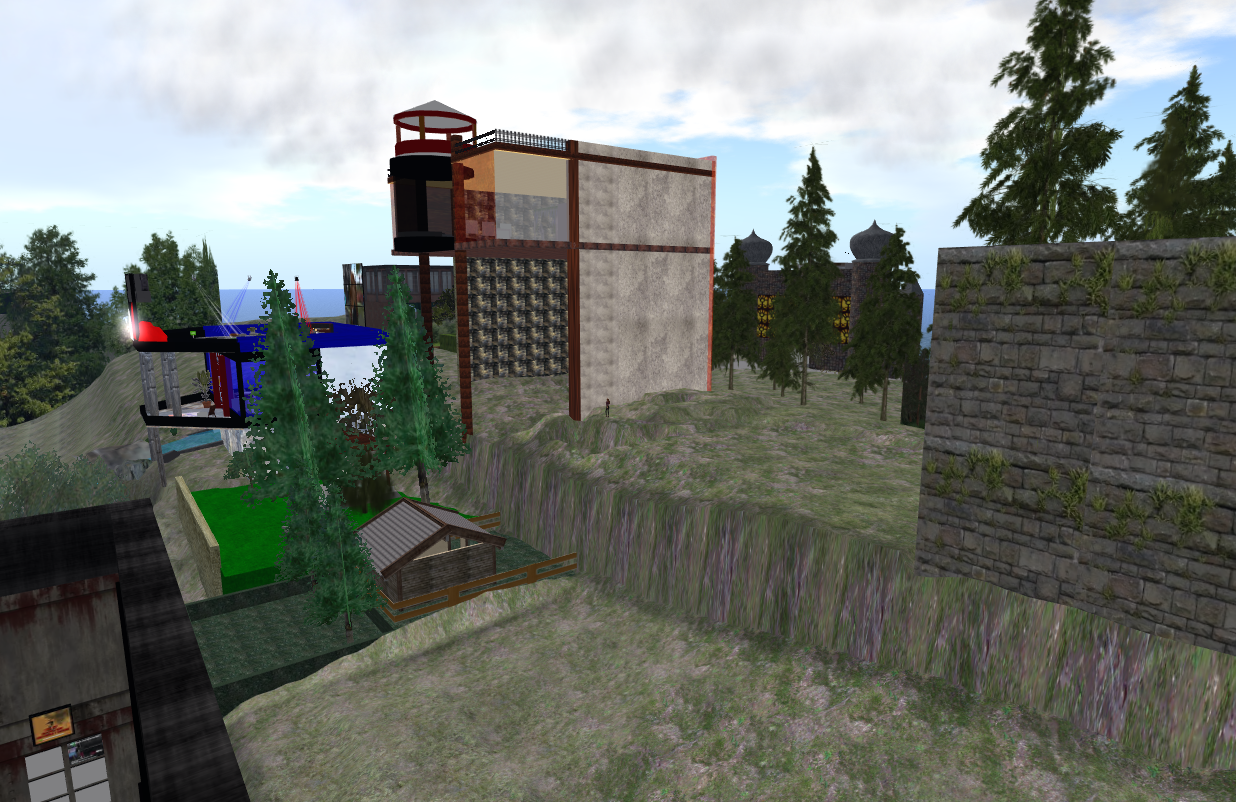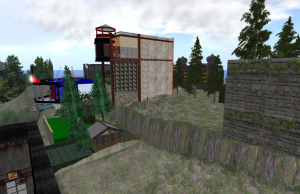This is such a simple rule… but so often misinterpreted. Or rather, people tend to interpret it according to their personal preferences (in the sense of what benefits them at the moment) and disregard the main rule of Economics when it doesn’t please them.
Join me in a journey across misinformation spread often around the Second Life® world, which I hopefully will attempt to debunk.
What people are complaining about
Look around and talk to your friends, specially the ones that are either content creators or landowners/landlords. The mantra so often repeated is that “nobody is buying anything”, or that “people are not buying/renting land anymore”, or the unavoidable: “people are leaving SL”.
If people are slighty more introspective about SL, they’ll say something different: “SL is not growing so much these days”. That’s a hint from a slightly different direction. We’ll see that in a moment.
But this is the overall, general feeling you get when roaming across the grid, bumping into strangers or old acquaintances — be they veterans of SL, former workers of Multiverse Development Companies (out of work since their companies failed to employ them on multi-million projects during the glorious days of 2007), illustrious thinkers and opinion-makers, SL bloggers or journalists, or just irregular users of SL, logging in every month or two and emitting opinions on what they hear and see.
In-world experts and journalists like Massively’s Tateru Nino also tended to flood the media with lukewarm articles about the lack of growth, fuelling a depressive outlook for the near future of SL. The optimists around us prefer to point at the usual curves and charts and shrug it off as a seasonal issue — everybody knows that SL grows much slower during the summer and that in-world sales have a boost at Christmas, something that content creators happily forget every January when they announce “massive drops in item sales”. But still, with the real world’s economy at a crossroads with big question marks looming over its incertain outcome, Second Life seems to imitate — once more — the pessimism of real life. “Economic cycles” are replaced by “doomsday predictions” every time the cycle is at the lowest, specially when trend analysts look at short-term data and try to predict the decades ahead. But no matter how much we shrug the numbers off, the fact is that land is left vacant on the mainland; projects shut down with lack of attendance; content creators are losing sales and shrinking their operations or even completely going away from SL; even RL metaverse development companies are closing up shop in SL and moving to develop Flash games or doing plain old Web sites instead.
We all have heard those stories from close friends, and they have become more numerous than usual. It’s hard to dismiss hard facts when everybody is telling the same thing.
There is obviously a typical psychological issue at work here. If you live in a fancy neighbourhood, but suddenly see people leaving, shopowners closing down, criminality rising, streets remaining unkempt as public funding to cover potholes is not enough, and friends and neighbours telling you that the imminent collapse of the neighbourhood is due and you should better pack and go, what should you think? You can look around yourself and see it’s all true: people are really leaving; shops are really closing. You’d be pressed to think that the end is, after all, nearby, and move along as well — specially if suddenly you’re out of a job because the local factory employing you shuts down their operations and move to China.
We humans tend to extrapolate global issues based on parochial (ie. local) issues. That’s normal, since our brains are built to deal with a “tribal” concept: if my tribe is hurting due to lack of food, I should better move it elsewhere. So we’re pretty good at evaluating what’s bad in our neighbourhood and deal with it.
It’s far harder to understand the big picture. The way we’re wired makes us jump to conclusions based on what we look and feel around our immediate neighbourhood, because that’s what we care about. Taking it into SL, if your community’s leader suddenly announces that she cannot pay the tier for the island you use and you have to leave — as have all your friends — you don’t really care if Anshe Chung or Azure Islands or SLNE or Caledon are making huge profits like never before. In fact, when was the last time you heard about any of those huge mega-communities? Probably — and this is also typical of the way people think — you imagine that they were the first to disappear, and that your tiny one-island-community was the last bastion of fun and entertainment in SL. So when your community goes, it’s only rational (and most definitely emotional!) to imagine that there is nothing left for you to do on SL.
There is also another subtle thing at work in our sub-conscience. If you’ve been long enough in SL, you’ve have gathered a long list of places and people you like to visit and meet with. You might never have appreciated the ratio of new places/people you have acquired in your past SL experience (usually it’s a hugely exponential curve at the beginning of your Second Life — everything is new! — and a healthy grow even after that, since more people will lead to meeting more people and visiting more places and meeting even more people… so it’s always exponential, even if over time it tends to be a very flat exponential curve). However, you’ll immediately feel the loss of a good friend that suddenly leaves; or a shop that suddenly announces a “last garage sale before shutting down”. How many of you have gone “No way these guys are gone from SL, they have been here forever!” and shook your heads as you took it at another sign of the dire times that SL is facing?
If these events occur over a long period of time, you tend to shrug them off (there are always new people to visit and new places to find). But if in a single week — or even day! — you get three or four comments that “this person left SL” or “this shop closed down in SL” or “I’m unable to sell my plot”, that will make you think twice. A “sudden rush” of bad news seem to be a sign that things are going terribly wrong, specially if there is a very short period of time between them. It’s typical of our behaviour.
Add to that the snowball effect of telling all your friends about the bad news — and finding out that they have “sudden bad news” to tell about, too! This becomes an exponential curve of bad news, too. One that might be so intense and high as the one of new experiences. Put it into another way: if every day in SL you meet on average one new person and visit a new place, if you suddenly, in a day, get the news that five people left SL and five shops have closed in SL, the perception you have is that the rate of SL abandonment is far higher than the rate of growth. Notice that for this to be felt even more it helps if you don’t get the news directly, but from your friends — by sharing conversations which might go like this:
“Oh, have you heard? Shop A has closed down, and Avatar X left SL in disgust. Poor X! She was losing so much money.”
“No way! X too? I’ve just come from Shop B and Avatar Y has the plot for sale! Fat chance, though, the way the land business is, she won’t make a good deal. I hope she doesn’t lose too much money though”
“Oh no, Shop B is gone? Gosh, I loved those boots; the best ever, since Shop C closed down last week…”
“Wait, do you mean it? Shop C has closed? I had no idea! Why, it was last month when I presented Avatar Z with a nice gift, they had such lovely cobra-skin designs…”
“What, haven’t you heard? Z has gone, too! She had this tiny live music bar and it simply didn’t work out for her…”
So in five minutes you get the sudden impression that everybody in SL is leaving and closing shop. Naturally… this will get passed on to your closest friends, and from there, to their own friends. Very soon this spreads out, and each time, people will add one or two examples of people who left or shops which closed down or plots left unsold for LL to claim back.
And very often these come to the attention of the media as well. Fashionista blogs, with their hundred thousand readers, announce to all of them when a shop closes down. Economy-related articles announce yet another community that fails to pay for tier, leaving their tenants without a place to call home. And then the ones reading these articles propagate the news at even a faster pace: “Have you read about it on Blog D? Wow, things must be going very bad, everybody is leaving — imagine, even Shop E closed down, and I haven’t even noticed that!”
Spreading memes that way — the meme that SL is at its end — is quite powerful and quick. It also reaches beyond the “usual suspects” — the “magic hundred thousand”, my bold claim of the people in SL that actually have an impact in the economy. I’ll explain that theory in a bit, but for now, the point here is to understand a few basic premises:
- Shops are closing down, plots are left unsold, people are leaving SL. These are all hard facts. They’re easily validated: just travel to old spots where shops used to be or people used to meet, and they’re not there. It’s not “badmouthing SL” or “being a pessimist”. People are really leaving; shops are really closing. This means that there is proof (ie. facts) of all these things happening in SL
- Memes travel fast. While most people do not read blogs or e-zines or even RL media — and so usually have no clue of what is being said in those — they are aware of the “stalling of the economy” and “of many people leaving”. They have friends who really left. They have friends of friends who told them they left SL. So they’re aware, even if they might not be informed.
- SL is hardly “a community of residents”, but several, interlocked, overlapped communities. We tend to extrapolate towards the global SL what happens on our parochial community. If everybody is talking about the downfall of SL in our community, we believe the same to be happening on any other community — specially if we belong to more than one (which is the most likely scenario), and we see people leaving on the other communities, too. That’s just the way we humans think, we cannot change it.
All the above, of course, can be supplemented with graphs and charts and statistics, either officially published, or retrieved by yourself (traffic measures or other metrics-retrieval mechanism). They tend to support the observed facts.




![Spammers are disseminating a new illegal SL client under my name [UPDATED AGAIN]](https://gwynethllewelyn.net/wp-content/themes/customizr-pro/assets/front/img/thumb-standard-empty.png)
